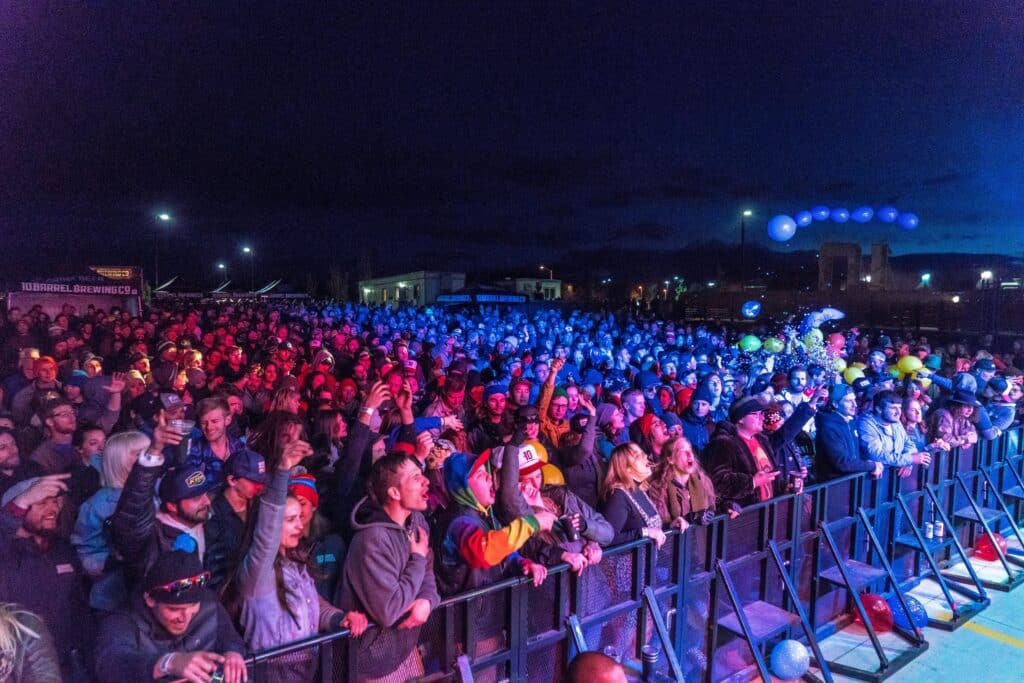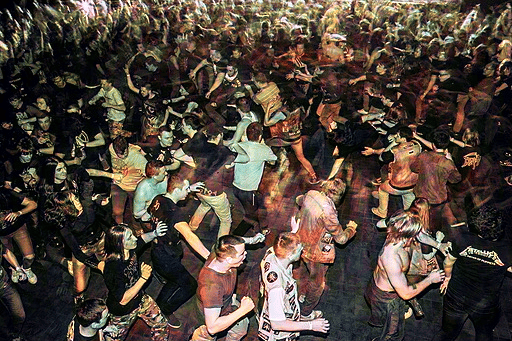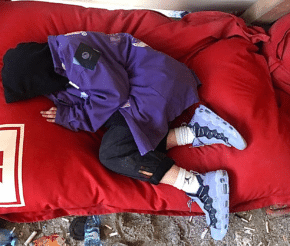- Advertise
-
Subscribe
Five Tips on How to Survive a Crowd Crush

A festive night turned into a horror movie scene when over 150 party-goers died during what we now call the Itaewon crowd crush tragedy. This month marked the two-year anniversary of the dystopian Astroworld festival, which saw 10 people dying and hundreds injured during a Travis Scott concert.
Somehow unpredictable but extremely destructive, crowd crushes claim the lives of 380 people yearly.
Catastrophic scenarios where walls of people block every route and there is no playback button to reverse the heavy congestion can happen at next week’s concert, a random soccer game, or a 2024 music festival.
In a perfect world, our safety at live music events shouldn’t be jeopardized by confined spaces, masses of people getting pushed, and clogged crowds
While organizers are responsible for managing crowds and keeping attendees safe, regaining control is a tough row to hoe once a risky situation unfolds. In a perfect world, our safety at live music events shouldn’t be jeopardized by confined spaces, masses of people getting pushed, and clogged crowds.
In the real world, we need tips on how to survive crowd crushes.
There is this thing called situational awareness
Just like any music fan who wants to get the most out of their ticket, our brain, sight, and mind will only care about where the stage is. Engaged and thrilled by everything happening on the mighty music altar, we will carelessly ignore how one too many people bump into us.

We won’t give two flying fucks about the visceral sense of danger caused by a rush of people toward one area.
Before a crowd surge is fully fledged, people will move, slow, and stop, indicating that something is obstructing the flow
Between sipping on your G&T and belting out tunes with your friends, there is little room for analyzing your surroundings. We hate to sound like some nagging parents, but taking the time to survey the crowd, checking if the density of people is thickening, and spotting the most obvious crowd exit are as important as having fun.
There are some subtle signs of danger.
Before a crowd surge is fully fledged, people will move, slow, and stop, indicating that something is obstructing the flow.
People complaining about discomfort will signal that things might get out of control.
If you have difficulty touching your face because of the heavy congestion, the danger has already become acute.
Gauging the crowd density is not easy peasy, but you will notice when you lose body autonomy and feel trapped. If you trust your instincts and maintain situational awareness, you can flee before the situation escalates from fun to fright.
Stand like a boxer
You got the idea – once you’re inside a crowd surge, you must ride it out. But sometimes, the crowd is already too tightly packed for you to leave – so you need to survive the crowd crush while being an integral part of it.
Your arms should be shielding your chest to create more breathing zone between you and the person in front of you
One thing that will optimize your chances of getting to safety ASAP is the way you stand. Experts say that when caught in a crowd crush, the best stance you can go for is a boxer-like one. Keep your feet apart, one foot in front of the other, and knees slightly bent – imagine you are surfing because that’s the whole point.
Surfers follow the same posture, as it increases balance and improves control – two things you will need most when trying to survive a crowd crush.
Your arms should be shielding your chest to create more breathing zone between you and the person in front of you.
While posture will protect you from getting injured and trampled, your number one goal is to stay on your feet.
In a suffocating crowd crush, individuals are pressed so tightly together that once someone falls, their surroundings will also follow in a domino effect.
No matter what you dropped, how uncomfortable your shoes are (ditch them if you must), or how bad your back hurts – stay on your feet because once you bend down, you’re unlikely to get back up.
When trying to survive a crowd crush, save your breath
Contrary to popular belief, the reason behind most crowd surge-related deaths is asphyxiation, not injuries from getting trampled or pushed around. It takes about six minutes of oxygen restriction for you to go into compressive asphyxia, so O2 is your most precious resource.
In tightly packed crowds, the air tends to be hot and muggy, so your best bet is to lift your head up to get some fresh air
Don’t waste it on screaming, shouting, or talking.
Instead of using words, try to use sign language and point, wave, or even use your eyes to communicate with the rest of the crowd.
Experts note that most crowd crushes are relatively quiet, as individuals try to stay calm and preserve the oxygen as much as possible. In tightly packed crowds, the air tends to be hot and muggy, so lift your head up to get some fresh air.
Go with the flow
When pushed, our natural reflex is to resist the pressure and push back. In the case of a crowd crush, it is you versus the masses of humanity behind that believe the way to go is forward.

Trying to withstand the constant flow of shoving and thrusting might not be the smartest idea since the only thing resulting from a rendezvous between two opposite motions is lost body autonomy.
Resisting is a waste of time and energy, so let yourself be carried by the flow and try to keep your balance.
Dense crowds surge, ripple, and move in waves, so the best option you have is to listen, watch and anticipate the unanimously approved route.
You can slightly change the way, meaning that if you move forward, you can move a bit to the left or right – but never take the opposite direction.
Once you get the chance, move diagonally
No matter how dense a situation is, there’s always a lull in the aftermath of a few aggressive pushing sessions.

These moments of short-lived calmness will ease the barriers of people and give you a chance to make a step forward to safety.
According to The Centers for Disease Control and Prevention, moving diagonally toward the crowd’s edges is the most reliable option.
You do a couple of steps sideways, wait for the next wave surge to calm down, then do some more steps in the next lull until you work your way out.
At concerts and music festivals, crowds tend to thicken near the stage barriers because everybody is elbowing each other to see their music hero
In general, a crowd surge’s safest point is the periphery since it is farthest from the epicenter of a crush.
At concerts and music festivals, crowds tend to thicken near the stage barriers as everybody is elbowing each other to see their music hero. Nobody wants to sit on the boring sidelines because the vibe is off and the view is shit.
But that belief transforms the margins into a shelter from possible stampedes, crowd surges, and trampling.






